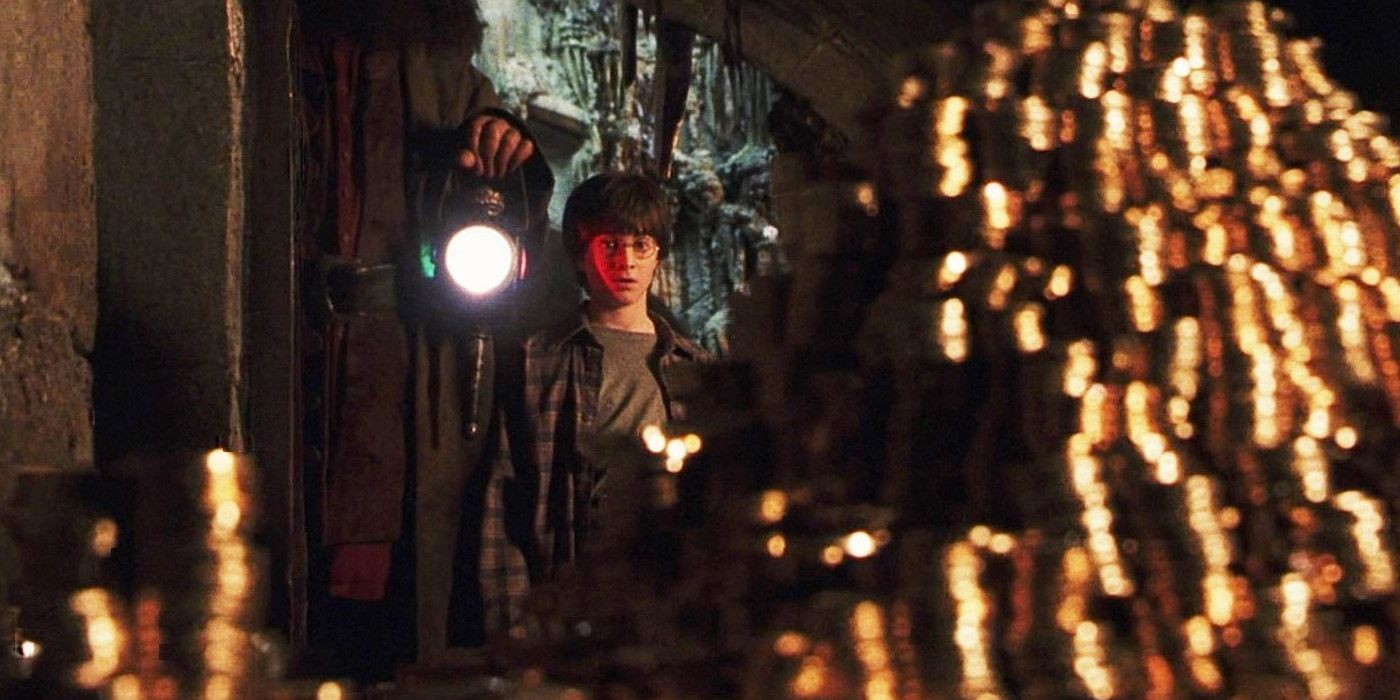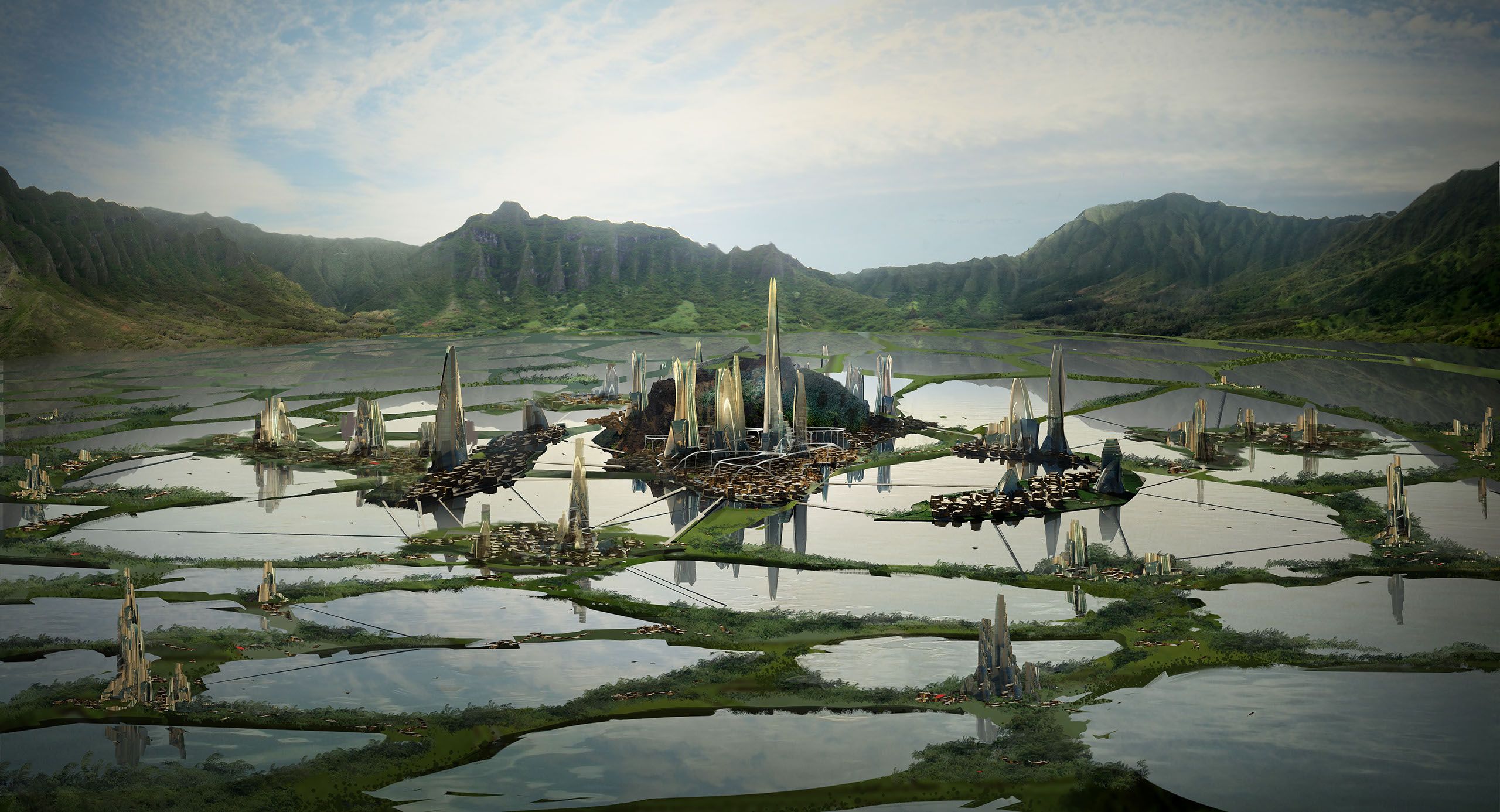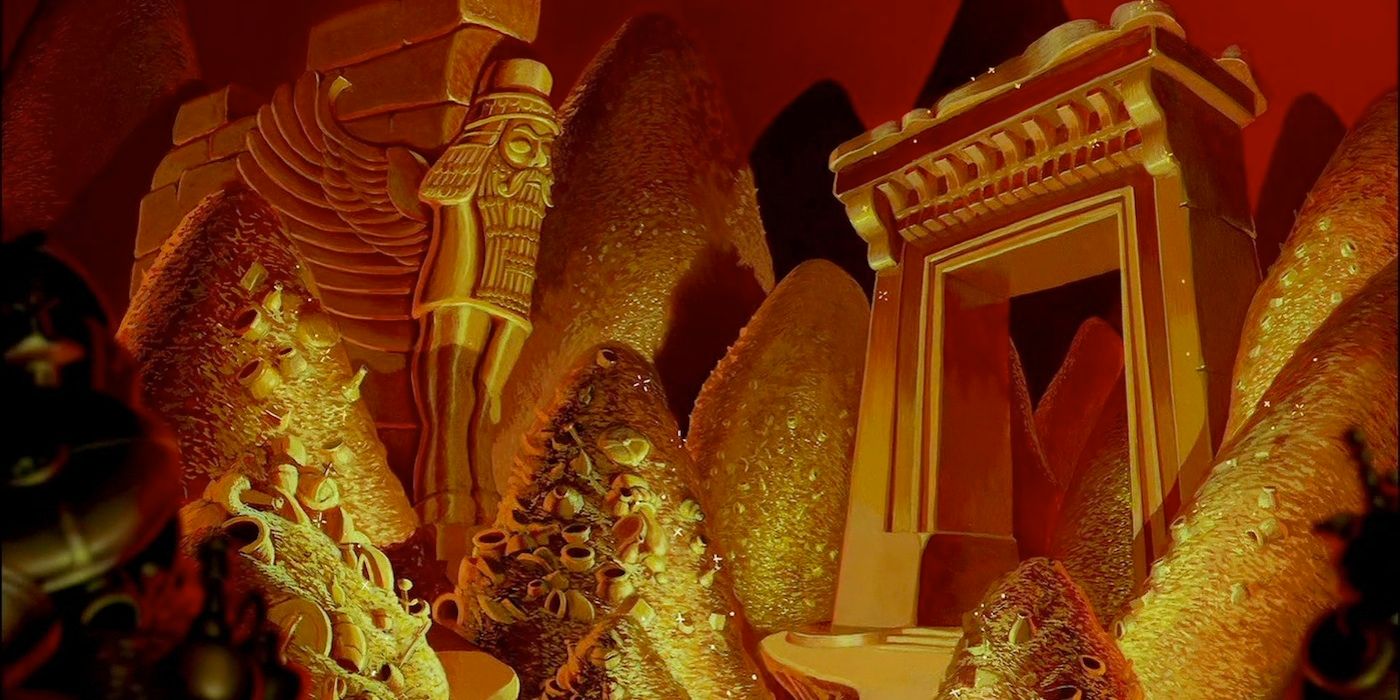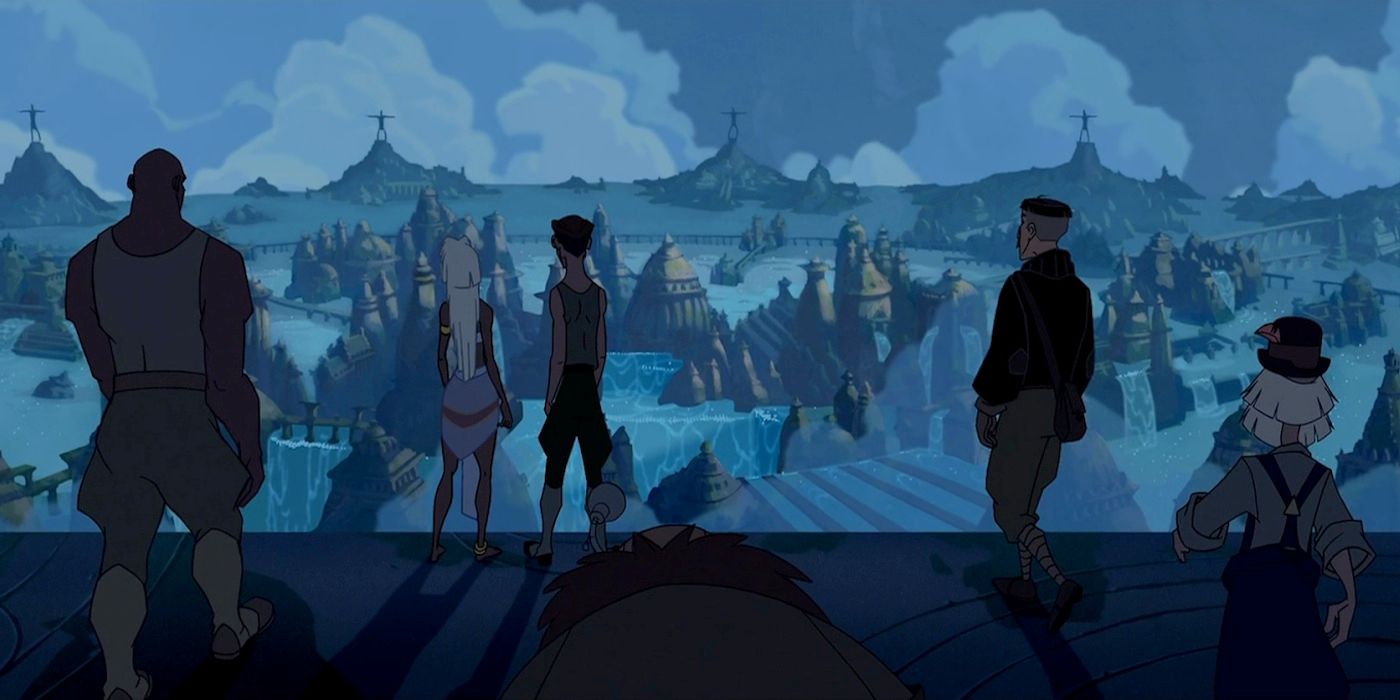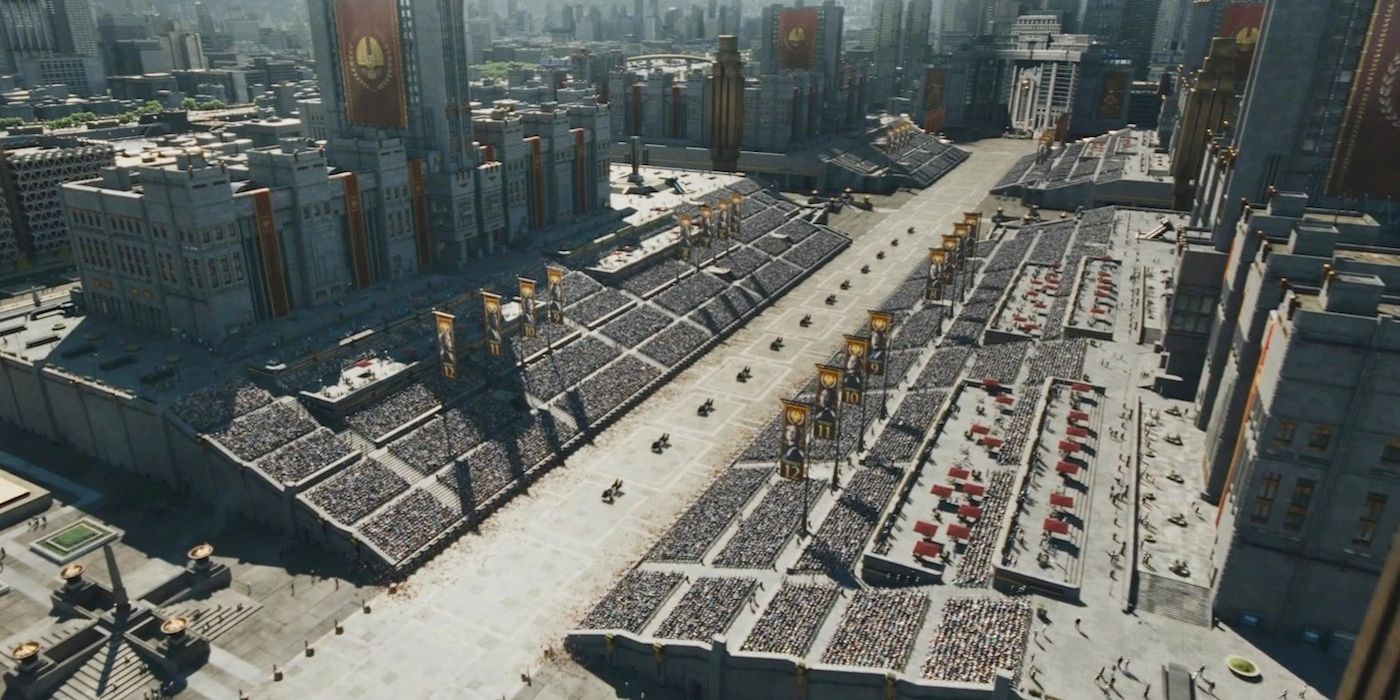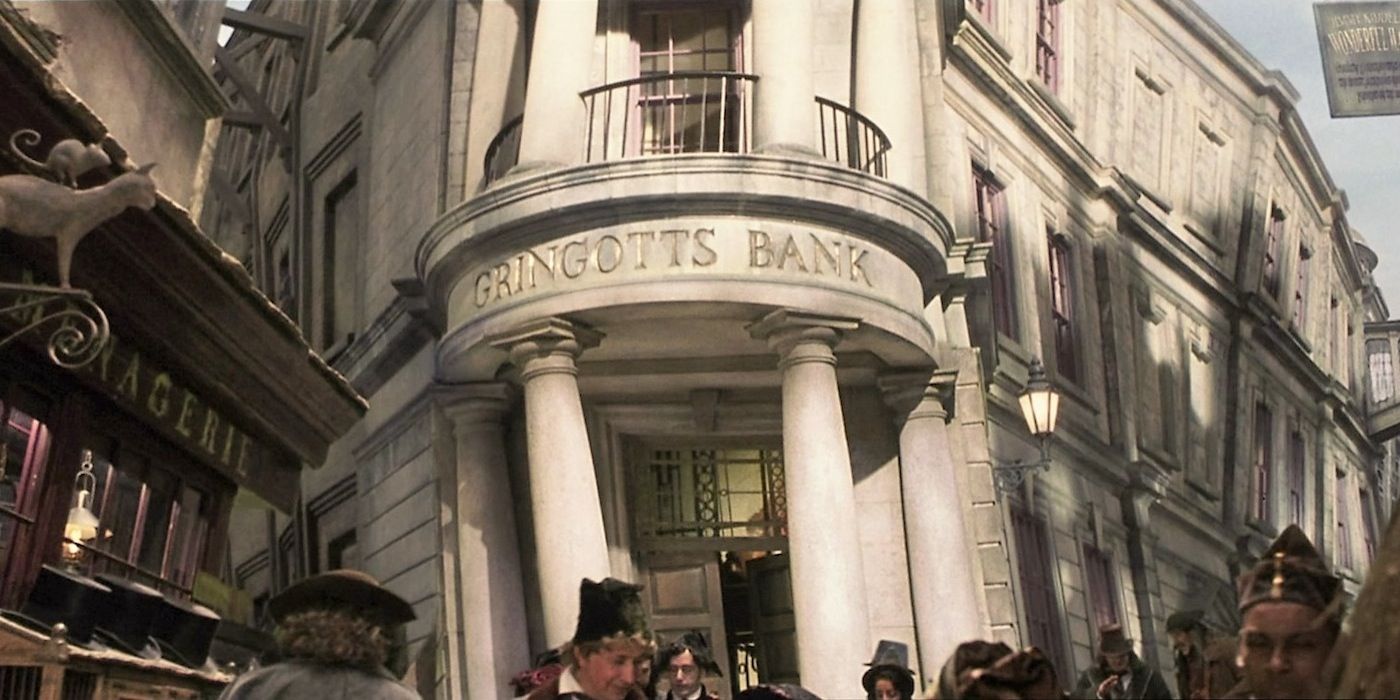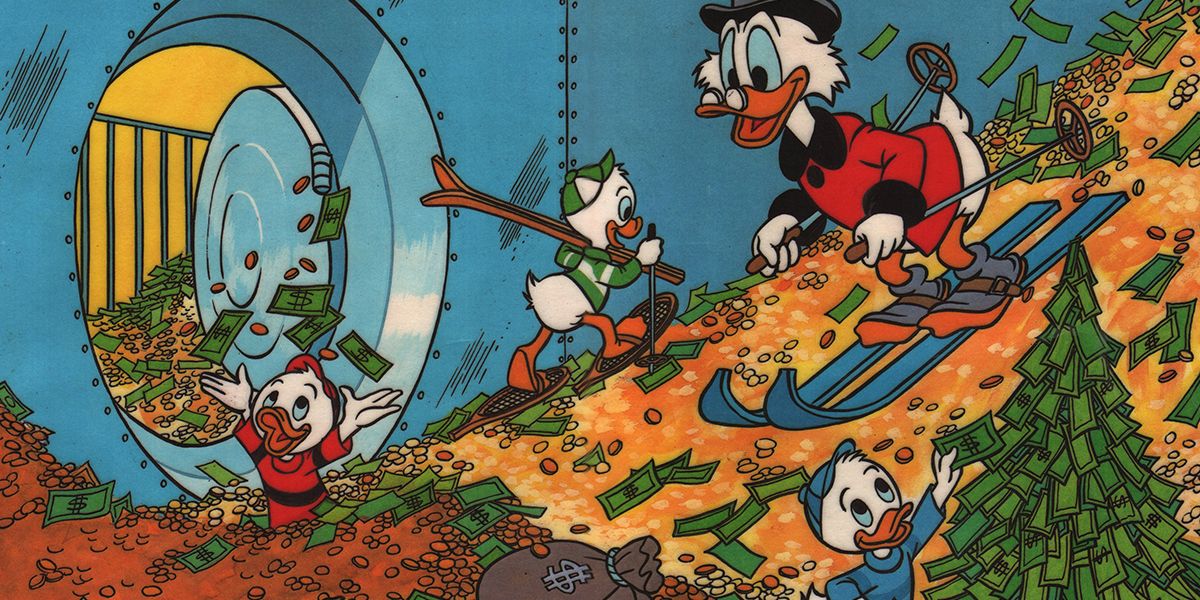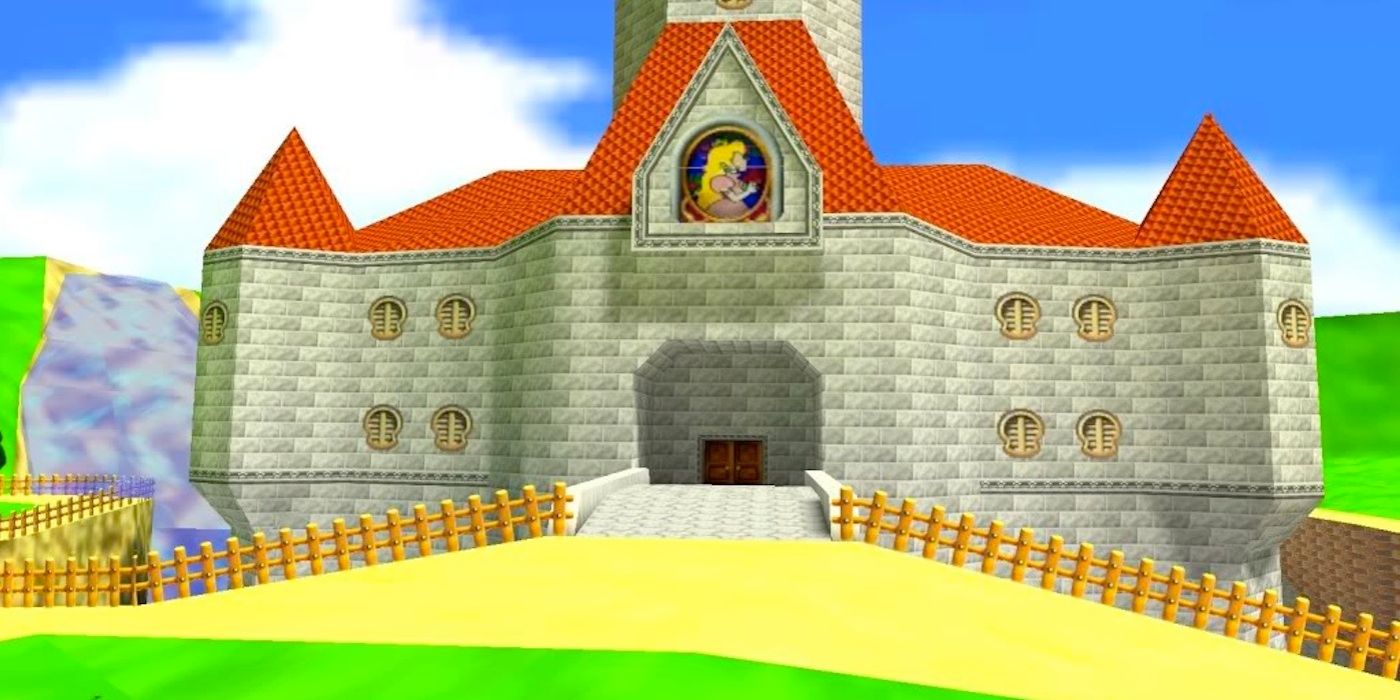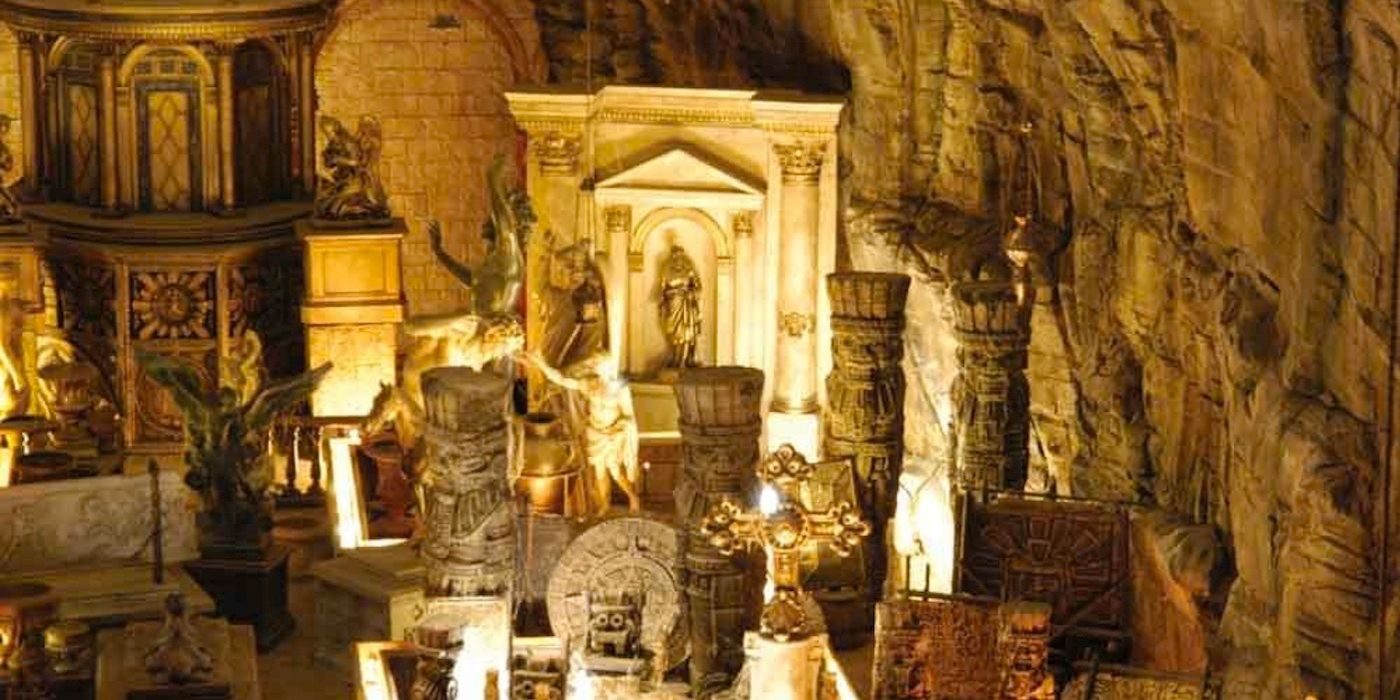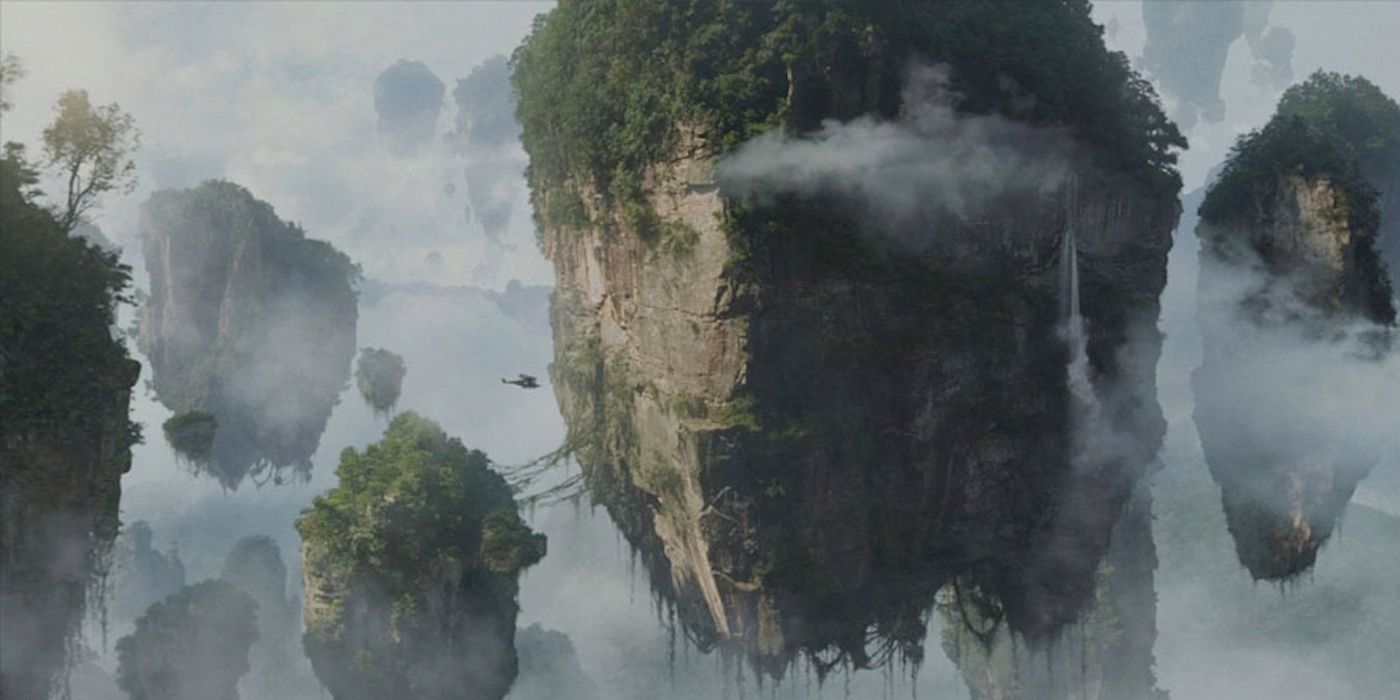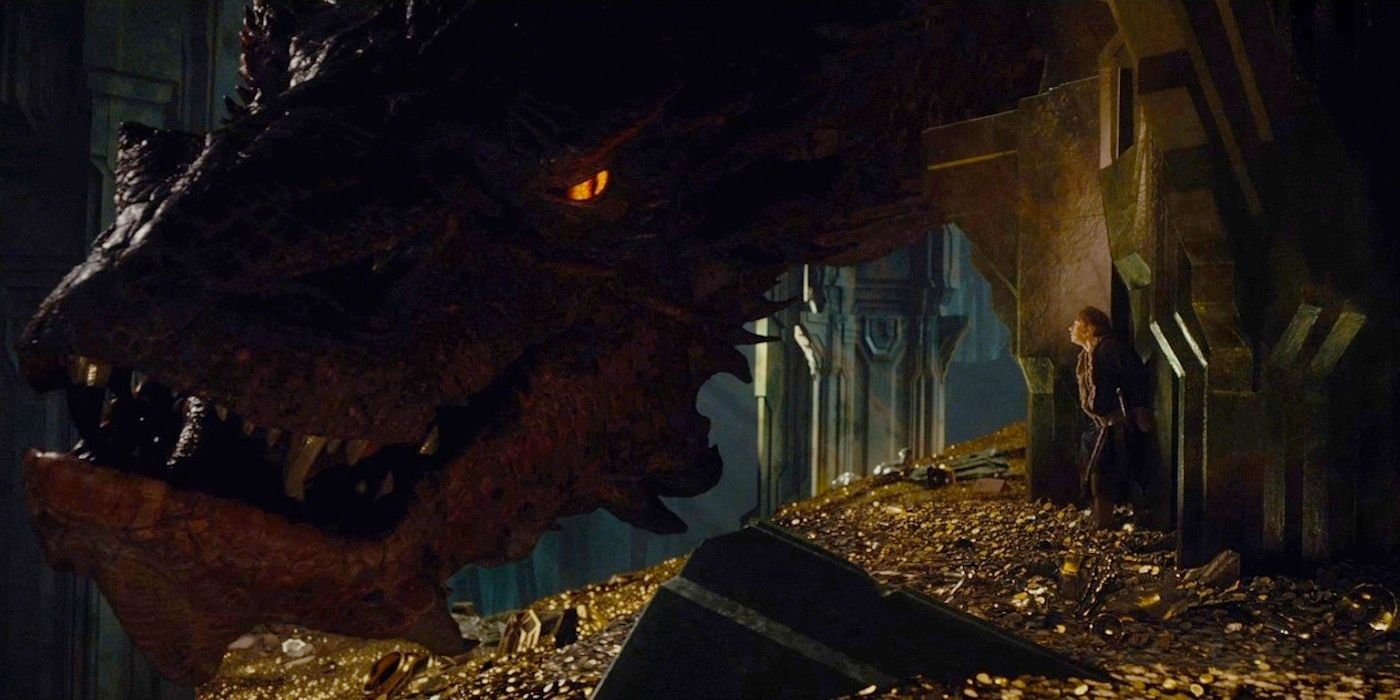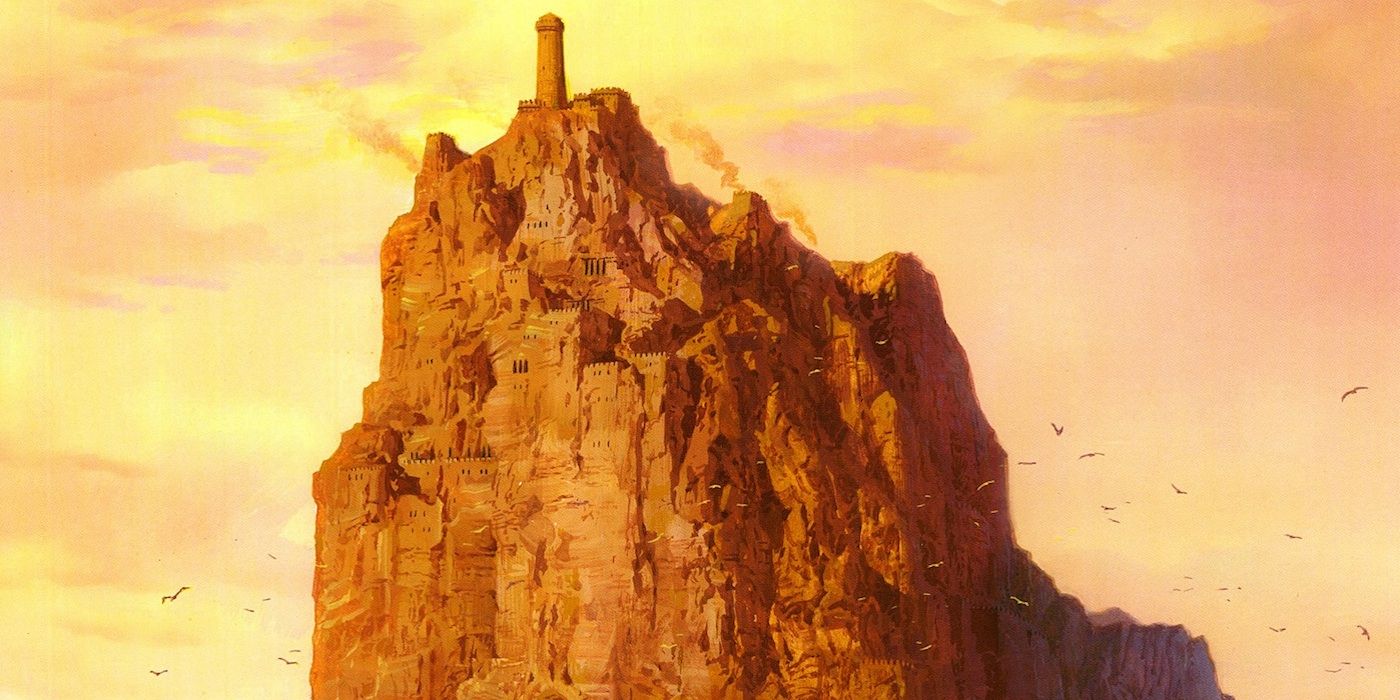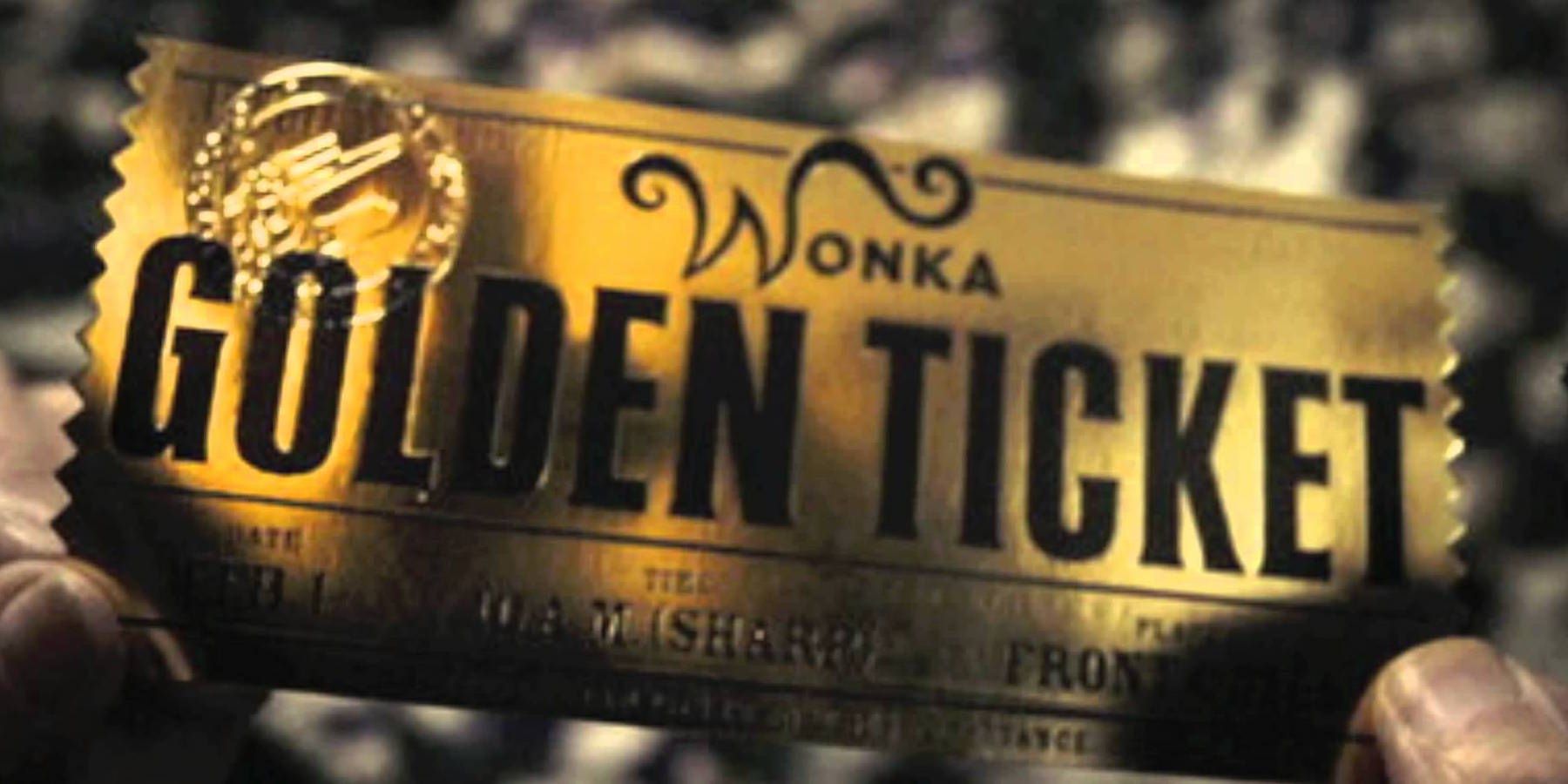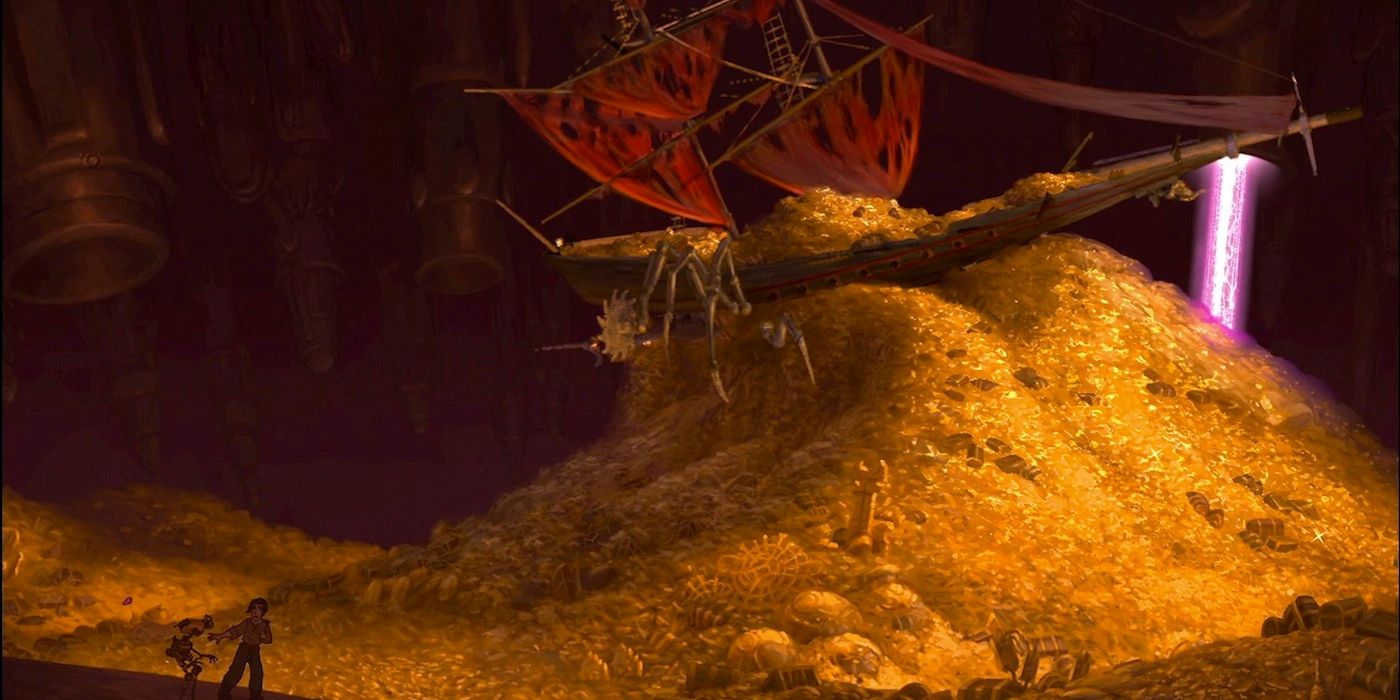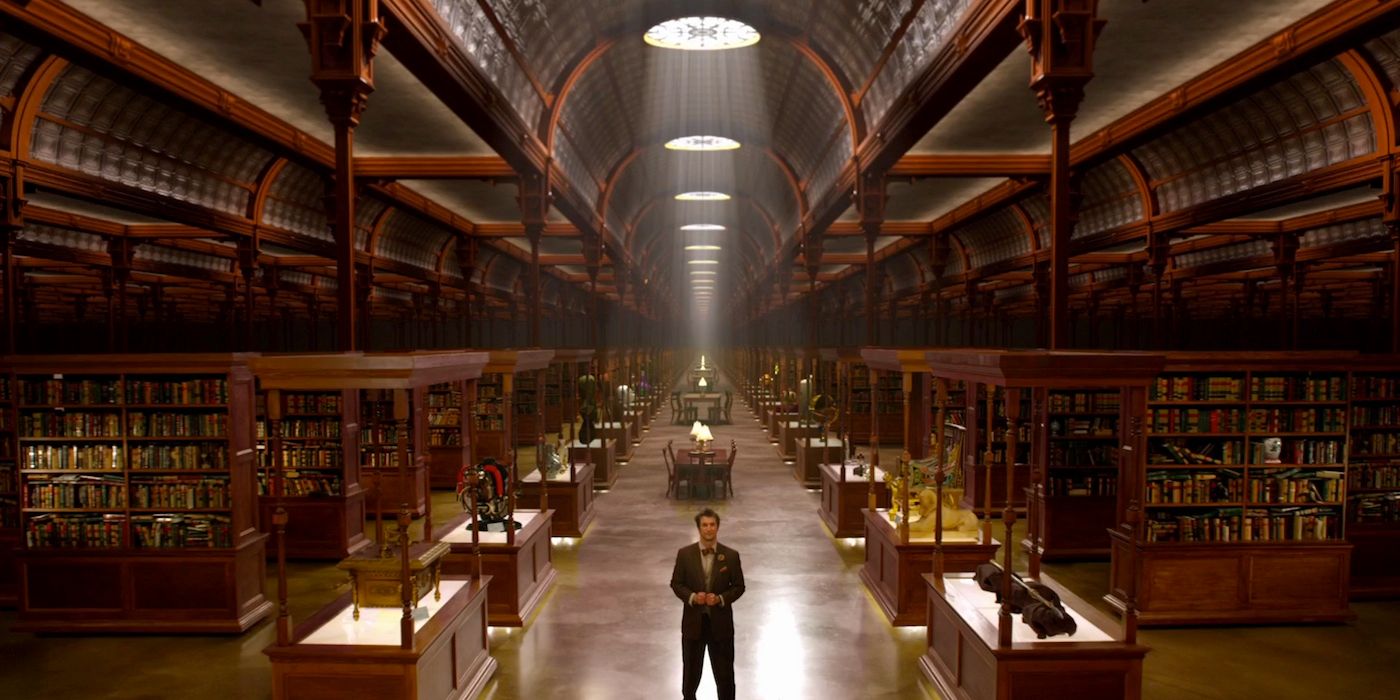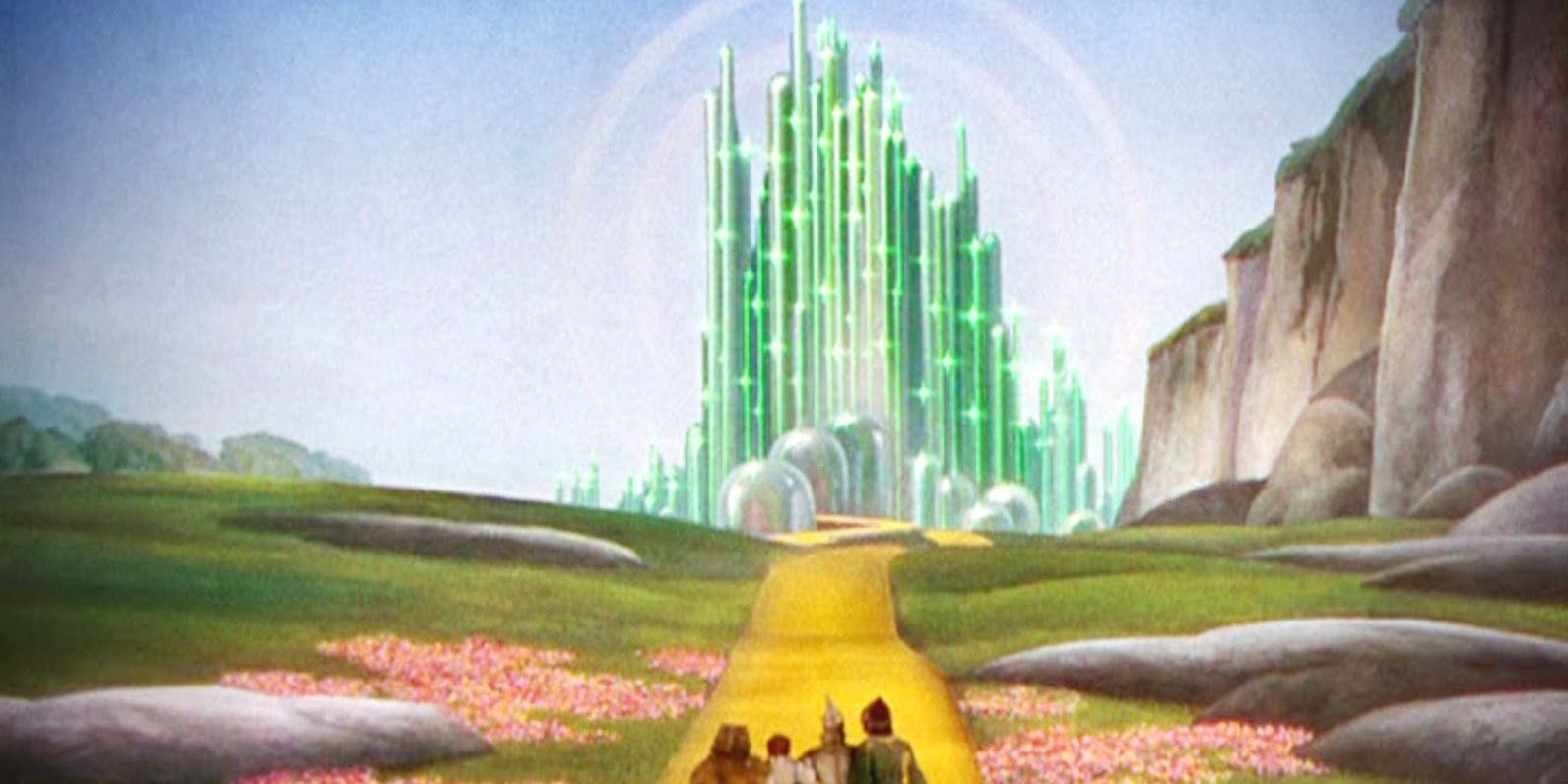They say that money can't buy happiness. While that may be true, we can all agree that massive hoards of wealth are objectively awesome. After all, we seem almost obsessed as a society with building treasure troves into our narratives.
Come on, no one would have have read Robert Louis Stevenson's novel if he had called it A Reasonable Amount of Money Island. We want to see vast and shining representations of unmatched riches and incalculable prosperity. Indeed, for most of us-- i.e. the 99%-- that's the closest we'll ever get to the real thing. Our collection of Beanie Babies just can't compete with the impossible affluence of the imagination (although our Princess Diana Bear is totally worth a lot to the right collector, haters).
We've assembled the biggest and the best examples of wealthy locations in the massive fictional multiverse. When possible, we've put the mind-boggling wealth into real world terms. You know, so that way we can see exactly how much of this made-up money we're never going to have. If you enjoyed either of our lists on the richest superheroes, then you're going to love the 15 Wealthiest Places In All Of Fiction!
15. The Nation Of Wakanda (Black Panther)
Wakanda is a hyper-advanced African nation home to Black Panther, one of Marvel's most awesome superheroes. Featured in after-credits sequence of 2016's Captain America: Civil War, Wakanda is a bastion of highly advanced technology in almost every conceivable field. The wellspring of this spectacular achievement? Vibranium. The incredible metal has the ability to absorb all vibrations-- including kinetic energy-- and use the energy to make itself stronger. Most famously used as part of the alloy of Captain America's shield, vibranium also acts as a powerful mutagen (granting superhuman abilities to many Wakandan natives) and an alleged enhancer of mystical energies.
So, how much does the nation of Wakanda benefit from vibranium? Valued at $10,000 USD per gram, the metal is worth more than twice as much as plutonium. With an estimated 10,000 tons of vibranium in Wakanda, it would take more than the GDP of the entire world to purchase it all. Seeing as Black Panther himself (leader of Wakanda as King T'Challa) has a personal networth of over $90 trillion, it's staggering to imagine the wealth of his nation.
14. Cave of Wonders (Aladdin)
Hidden deep in the desert and accessible only to the diamond in the rough, the Cave of Wonders served as the home to the Genie's lamp in Aladdin for over 10,000 years. Oh, and a load of forbidden treasure as well. Take, for example, the massive gemstone that Abu takes from that horrifying golden monkey statue. It appears to be a double star ruby (the world's rarest variety) and looks to be around one-third of Abu's body length. Assuming that Abu is 18" long (an average size for a capuchin monkey) that means the ruby is 6" long by 3" wide. That's fully five times larger than the biggest double star ruby in our world, the Neelanjali Ruby, a massive gemstone valued at around $100 million.
That means the ruby that everyone's favorite little kleptomaniac grabbed is worth a cool $500 million USD-- at least. And that's just a small part of the treasure. The gold in the outer chamber is conservatively worth billions, then there's the inestimable value of the Genie himself. Too bad the weird sand lion freaks right the hell out if you touch anything.
13. Atlantis
While there are many versions of the fictional sunken city state-- stretching back to Plato's dialogues Timaeus and Critias and extending to DC's Aquaman-- we want to focus on the animated version depicted in Disney's 2001 Atlantis: The Lost Empire. In this story, we follow Milo Thatch (voiced by eternal optimist Michael J. Fox) as he rediscovers the lost society with a ragtag team of explorers. It turns out there is a sinister motivation behind the expedition, however, when it's revealed the benefactor was after the Atlanteans' power source: a crystal that converts emotions into energy.
That, uh, that seems like a perfectly reasonable motivation actually. The crystal doesn't appear to produce any harmful emissions, it can form impenetrable energy shields, and it extends the lifespan of people exposed to it. The world's energy industry alone is worth about $300 billion, and the crystal would probably supplant large sections of the medical and defense industries as well. It's easily the most important and valuable single object in the world. Except when, you know, it sometimes gets upset and kills a bunch of people. Still, it sounds better than fossil fuels.
12. The Capitol (The Hunger Games)
The lavish seat of power in the Hunger Games series, the Capitol serves as the logistical nerve center of all Panem. Its citizens enjoy unimaginable material comfort, and the government commands the wealth of North America. Think about that for a moment. Objectively, that's pretty bonkers.
The combined GDP of the United States, Canada, and Mexico is around $19.858 trillion. Granted, Panem is a nation cobbled together from the remnants of some sort of apocalypse, so production might be a bit lower. Bu frankly? we kind of doubt it. The Capitol siphons every resource from its attending Districts; almost no wealth stays where it originated.
Think about the kind of money it takes to throw an annual Hunger Games! The films themselves cost $493 million to make, and they didn't have to actually build a giant death island that was also a clock for some reason. The Capitol is clearly one of the wealthiest societies in history. Either that, or they're just obsessed with appearance.
11. Gringotts (Harry Potter)
The wizarding world's answer to the question, "what if there was a Wells Fargo that also sometimes murdered you with a dragon?", Gringotts is the repository of magical wealth in England. Forbes puts the estimated value of Gringotts at $4.4 billion (probably by comparing it to banks of similar size), with almost all the wealth concentrated in the personal holdings of various private families like the Potters and the Blacks. The question of why a wizard would even need money is one for another time, however. But seriously, can't they just make or summon anything they need?
Anyway, for the curious, a few mathematically inclined muggles have also calculated the value of Harry Potter's personal fortune based on the size of his coin piles seen in Harry Potter and the Sorcerer's Stone and using the galleon to dollar conversion rate. Estimates range from $1.3 million to over $4 billion. Either way, that's a lot of chocolate frogs for the Boy Who Lived and his ridiculously named children.
10. Scrooge McDuck's Vault (Duck Tales)
Is there any image of affluence more culturally pervasive than a Scottish cartoon duck swimming in a pool of gold coins? We submit that there is not, with the possible exception of Oprah giving away cars to people who can't afford to pay taxes on them. Regardless, Scrooge McDuck's vault/swimming pool is an institution. In fact, so many people have marveled at the idea of literally submerging oneself in riches that someone actually sat down an figured out how much it would cost.
According to The Billfold's Matt Powers, Scrooge McDuck's wealth would total at around $31.2 billion. If that's not opulent enough for you (in which case, seriously, get some help) there's also an episode of Duck Tales in which the greedy duck actually skis down a mountain of gold and cash. By calculating his angle of descent and estimated acceleration, Powers found that it would take between $73.5 and $210 billio to hit the golden slopes. Be sure to check out the new new Duck Tales reboot this summer to see if Scrooge McDuck still loves money (spoiler: he probably will).
9. The Mushroom Kingdom (Mario)
The crown jewel of the Mario franchise, the Mushroom Kingdom is surely one of the wealthiest monarchial states to have ever existed. Ostensibly governed by an abduction prone princess and her fungal seneschal, the Mushroom Kingdom has a bounty of resources unfathomable in our world. Their's seems to be a post-scarcity society, wherein everyone has food and shelter provided for them. Their citizens can pursue careers and challenges that fulfill them emotionally, instead of just mindlessly grinding for a paycheck. Mario is nominally a plumber and he spends approximately none of his time plumbing.
Let's not forget, Bowser is constantly trying to invade the Mushroom Kingdom. Part of that has to be resource based. You cannot get your troops to invade over and over again based solely on interspecies amorous desire. How wealthy is the Kingdom, exactly? While it's difficult to tell, the richest kingdom in history was the West African Mali Empire (valued at over $410 billion) and they had nowhere near the type of material resources and comfort the Mushroom Kingdom enjoys. Hell, they're so flush they leave coins just laying around for any Italian roustabout to find!
8. The National Treasure
For centuries, the Freemasons and their predecessors collected objects of historic, religious, and cultural value in order to protect them from harm. And, we assume, because they had a bit of an undiagnosed hoarding problem. Neuroses aside, the collection they established was legendary. So legendary, in fact, that people didn't think it was real. In one of Nicholas Cage's more sane roles (check this out for the crazy ones) he plays an eccentric history buff/treasure protector dedicated to finding this made-up fortune in National Treasure. It does, of course, prove to be real.
Racing against his former colleague Ian-- played by Sean Bean, who astoundingly doesn't die despite being both a villain and Sean Bean-- Gates discovers the titular treasure through determination, an insane amount of luck, and good ol' fashioned history geekery. Although he only accepts one percent of the treasure as a finder's fee (which he splits with Doug from The Hangover), Gates still ends the movie as a millionaire. The total estimated value of the historical hoard? $10 billion. That ought to keep the Smithsonian funded for the next forever.
7. Pandora (Avatar)
4.4 lightyears away in the Alpha Centauri system there is a fertile moon called Pandora. Populated by megaflora and megafauna (including the sentient Na'Vi), Pandora is the destination of mankind's first interstellar journey. The goal of this trek across the stars? Unobtanium. A room temperature superconductor, unobtanium is the only substance in James Cameron's Avatar series capable of facilitating interstellar flight. It's valued at 20 million USD per kilogram (about 2.2 lbs) when raw, and 40 million per kilo when refined.
Now, the movies have yet to make clear exactly how much unobtanium is on Pandora-- perhaps they will cover it in the upcoming sequels-- but we do know that an expedition to Alpha Centauri would easily cost trillions, if not hundreds of trillions of dollars. Given the fact that there are at least 25 other potential unobtanium mining sites as big or bigger than the one we see in the movie, according to the official field guide, it's safe to assume that we are betting on Pandora being a goldmine. An unobtaniumine.
6. Smaug's Den (The Hobbit)
The dragon Smaug (brought to life by Benedict Cumberpatch in The Hobbit: Desolation of Smaug) is renowned throughout Middle Earth for his greed. A textbook hoarder, Smaug accrues treasure from all over the land with no intention of ever spending it. But have you ever asked yourself, "how much is this make-believe dragon's treasure really worth in modern currency?" Well if so, a) you're awesome, keep it up, and b) you're not alone.
Michael Noer over at Forbes has calculated the value of Smaug's holdings not just once, but twice. Apparently, his first run through wasn't stringent enough for the rabid Lord of the Rings fan base. Crazy, right? Those guys? Sticklers for detail? Who could have imagined. Anyway, his revised estimates put the total value of Smaug's treasure at 62 billion USD. That would make the ancient wyrm the fifth richest being in our world. Not bad for a flying lizard.
5. Casterly Rock (A Song of Ice and Fire)
"A Lannister always pays his debts." These words serve to remind everyone in Westeros of both the Lannisters' immense wealth and vindictive nature. One of the great houses in the Song of Ice and Fire series, and its smash hit TV adaptation Game of Thrones, the Lannisters' power is built on their riches. Specifically; the gold they mine from their ancestral stronghold, Casterly Rock. Standing a little over 2100 feet tall (that's just above the cloud line, for reference) and stretching 14 miles long, the Rock is a massive fortress that has never been conquered.
While in the show the mines beneath the Rock have run dry, series creator and Santa Claus look-a-like George R.R. Martin has said, "Unlike what has been said in the TV show, the mines haven't emptied, and are considered the best in the world". Indeed, in the lore of the books some of the veins that run through the Rock have been exploited for thousands of years, yet remain as rich as the day they were discovered. So how much gold is that, really?
While we can't say for sure, we can draw comparisons to the real world. Earth's best gold mine-- the Grasberg Gold Mine in Indonesia-- produces roughly 2 million ounces of gold a year. Given the fact that Casterly Rock is much bigger, but also using medieval mining techniques, that seems like a fair comparison. At a price of around $1,162 per ounce, that means that $2,324,000,000 of gold is coming out of Casterly Rock every year.
4. Willy Wonka's Chocolate Factory
Everyone loved 1971's Willy Wonka & The Chocolate Factory (and got vaguely uncomfortable during the 2005 remake Charlie and the Chocolate Factory starring Johnny Depp). Every child's fantasy, Willy Wonka's amazing factory was actually made of candy. Mr. Wonka was running such a successful business, even years of isolation didn't detract from his company's percentage of the market share. The Willy Wonka Candy Company is regarded as the biggest producer of confections in the world.
If we compare that to an analogous corporation from reality, say Mars, Inc., then we can assume Wonka does a little north of $30 billion a year in sales. When you factor in his slave labor workforce and the fact that he seems to perform all R&D himself in-house, then it's easy to see how he has so much capital left over for whimsical purple suits and fancy hats. That's not even taking into account the fact that he has a device which can turn matter into energy. Remember when he put that cowboy kid inside a television? That was easily the biggest scientific breakthrough of our time.
3. Treasure Planet
An animated reimagining of Robert Louis Stevenson's Treasure Island, Disney's 2002 film Treasure Planet hits many of the same notes. A young boy (Jim Hawkins, voiced by Joseph Gordon-Levitt) leaves home to seek adventure on the high seas. Or, uh, deep space, as it were. The hoard that Hawkins and the villainous John Silver are seeking is no mere island, however, but an entire planet of treasure. Colloquially referred to as, "The Loot of 1000 Worlds", this interstellar collection of booty represents an enormous amount of wealth.
How much wealth? Well according to Redditor u/14nickel, the treasure on Treasure Planet is 900 feet in diameter and about 20 feet deep. As the treasure is mostly made of gold coins, that means the mass of the booty is 1.35 * 1010 kilograms. Since gold is worth around 37,000 USD per kg, that puts the value at around $500 trillion. For reference, that's 90 times the amount of gold that we have ever extracted from the Earth. Imagine what one could do with that kind of money. Definitely pay off student loans. Or like, everyone's student loans.
2. The Library (The Librarians)
The Library, despite its deceivingly simple name, is one of the most impressive entries on this list. Guarded by Librarians for thousands of years, the Library was the focus of three made-for-TV movies and a spin-off TV series currently entering its third season. In The Librarians, the repository is depicted as a quasi-sentient pocket dimension which houses innumerable artifacts from across the multiverse. It basically seems to hold everything. Like, really everything.
Accessible only through a door located in the New York Metropolitan Public Library, the storehouse includes such treasures as: Aladdin's magic carpet, Walt Disney's frozen head, and the Holy Grail. It's difficult to estimate the value of the Library, as it seems to be priceless. As in: it invalidates the very concept of currency. It contains the Goose That Lays Golden Eggs; therefore it can produce infinite money.
Additionally, the Library has three working time machines: the DeLorean from Back to the Future, the Doctor's TARDIS from Doctor Who, and H.G. Wells's original Time Machine. Basically, the Library is the warehouse from the end of the Indiana Jones film Raiders of the Lost Ark on steroids.
1. The Emerald City (The Wizard of Oz)
At the end of the Yellow Brick Road lies the fabled Emerald City. The greatest metropolis most famously featured in The Wizard of Oz serves as both its capital and the home of its ruler. Meant to showcase the wealth of Oz, the buildings of the city are made entirely of emeralds, glass, and other jewels. How much would it cost to build such an astonishing place? Well, let's do the math.
There are exactly 9,654 buildings in the Emerald City according to the sixth book in the series, The Emerald City of Oz. The average square footage of buildings created before 1960 was 12,000 square feet (perhaps a leap in logic, but let's assume the Wizard wanted things to look like home). A typical emerald costs $4,500 per carat at the size of 9x5 millimeters. Assuming that the other jewels used in construction were of equal value, it would require 24,774,222.22 gems at a cost of $11,484,000,000 USD to build. Oh, that's to make one building.
For the whole city, it would cost a little over a quadrillion dollars (1.0762665e+15 dollars to be more exact) to construct. Or, to put it another way, more money than has ever existed, ever, in the entire history of man. The rent on a one-bedroom apartment there must be outrageous. Like, Bill Gates would probably have to settle for a studio.
---
Did we miss your favorite treasure trove? Which hoard would you want the most? Let us know in the comments!

